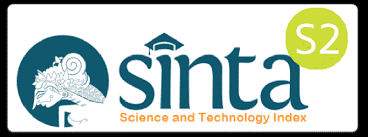The Effect of Warm Water Compress on the Vagina on the Healing of Perinium Wounds in Post Partum Mothers
DOI:
https://doi.org/10.35730/jk.v15i2.1155Keywords:
KebidananAbstract
Background: Based on data from the World Health Organization (WHO) in 2017, around 830 women died every day due to complications during pregnancy or childbirth. In Indonesia, 75% of women who give birth vaginally experience perineal wounds and some of these wounds have the potential to become infected. In the Tanjung Emas Community Health Center working area, out of 23 post partum mothers, 4 people (27%) experienced slow wound healing. One cause of infection is poor perineal care. The cause of the high infection rate is due to a decrease in the body's resistance in mothers who are susceptible to infection. To reduce the risk of maternal death globally from 216.1 million live births in 2015 to 70 per 100,000 live births in 2030.
Purpose:The purpose of this research is to determine the effect of warm water compresses on the vagina on healing perineal wounds in post-partum mothers. Methods: The design of this research is a two-group post test only control group design. The population in this study was all postpartum mothers (0-40 days) from December-March 2024 who gave birth in the Tanjung Emas Community Health Center Working Area, namely 23 people. The sampling technique used is a non-probability sample using the sampling technique method in this research using purposive sampling, namely 8 intervention groups and 8 control groups.
Results: The results of this study were that the average wound healing was 5.5 and in the Control Group 6.5 days with a mean difference of 1 day and SD = 0.926. The results of calculations using the Paired T-Test showed p value = 0.039 (p < 0.05), which means Ho is rejected and Ha is accepted, meaning there is a significant influence between the effect of warm water compresses on the vagina on healing perineal wounds.
Conclusion: Further research may be carried out to develop research on other effective methods for healing perineal wounds in pregnant women.
References
A Kurniarum.2017.Asuhan Kebidanan Persalinan Dan BBL Komperhensif. Jakarta Utara: EGC
Sari, P. I. A. 2019. Pengaruh Kemampuan Vulva Hygiene Terhadap Waktu Penyembuhan Luka Perineum Pada Ibu Post Partum Primipara. Oksitosin : Jurnal Ilmiah Kebidanan
Cunningham, F. G., et al. 2018.Williams Obstetrics (25th Edition). penerbit : McGraw-Hill Education
Saifuddin. 2019.infeksi post partum.Jakarta: Kemenkes RI
Fatimah & Lestari, P., 2019. Pijat Perinium. Pustaka Baru Press
Maritalia, D. 2012. Asuhan Kebidanan Nifas dan Menyusui (S. Riyadi (ed.)). Pustaka Pelajar.
Martin, kaniak& griffin. 2017. Robekan Perineum: Penanganan dan Pencegahan. Journal of Obstetrics and Gynecology Research, Vol. 43, No. 2, pp. 145-150. Diterbitkan oleh: Wiley-Blackwell.
World Health Organization (WHO).2017. Trends in Maternal Mortality. https://www.who.int/news- room/factsheets/detail/maternal-mortality. Diakses pada tanggal 16 Mei 2024
Depkes RI. 2020. Data Kejadian Ruptur Perineum di Indonesia. Profil Kesehatan Indonesia
Puskesmas Tanjung Emas. 2024. Angka Kunjungan Ibu Hamil Selama Bulan November-Desember. Profil Puskesmas Tanah Datar
Meirianti, S. (2015). Kebidanan: Konsep dan Praktik Klinis. Jakarta: Rineka Cipta
Tinasia, S. (2015). Pendidikan Kesehatan Reproduksi dan Keluarga Berencana. Yogyakarta: Pustaka Pelajar.
Manuaba, I. B. G. (2009). Ilmu Kebidanan, Penyakit Kandungan, dan Keluarga Berencana untuk Pendidikan Bidan. Jakarta: EGC.
Sumiyoga, R. (2009). Dasar-Dasar Ilmu Kebidanan. Yogyakarta: Andi
Romi, S. 2009.Kejadian Infeksi Luka Episiotomi dan Pola Bakteri pada Persalinan Normal di RSUP. H. Adam Malik Dan RSUD Dr. Pimgadi Medan.Thesis: USU Respiratory
Nayab, N. (2016). Obstetrics and Gynecology for Nurses. New Delhi: Jaypee Brothers Medical Publishers.
Oxorn, H., & DeCherney, A. H. (2010). Obstetrics and Gynecology. 6th ed. Philadelphia: Elsevier Saunders.
Marini, M. (2019). Kebidanan dan Penyakit Kandungan: Panduan Praktis untuk Tenaga Kesehatan. Jakarta: EGC.




